It’s Tanksgiving, everygoon. We choose to celebrate this year by showing off some of the coolest, wonkiest, weirdest, sweetest tanks we’ve read about, seen, or used in a wargame. Grab those Tanksgiving Pants (the ones with the motor oil stains and wrench loops) and close the hatch as Goonhammer Historicals presses you into service in the best job you ever had.
Panzer IIIN in Slovak Service
Country of use: Slovakia
Dates of use: 1943-1944
Model: Warlord Games Panzer III plastic kit

Slovakia used the Panzer 38t (better known as the LT 38 in Slovak service) – as well as the 35 and 40 – throughout 1941 and 1942. They served well but command realized they needed more modern armor. They attempted to place orders for the Panzer IV from Germany but were sold the Panzer III N and Marder III H instead.
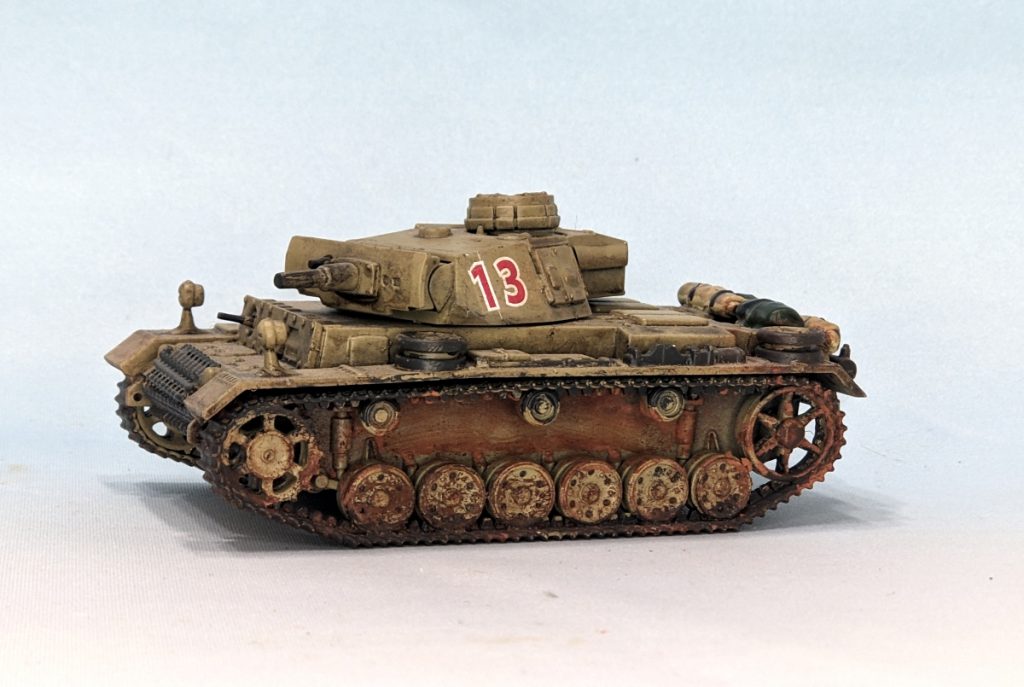
From what I can find, the Panzer III N did not see service on the Eastern Front – it was kept in Slovakia. One source did say they were brought back from the Eastern Front by command, lying to German high command saying they couldn’t be fixed on the front.
They were used against the Germans during the Slovak National Uprising, along with the Marder III H. It really didn’t go great for the Slovak Army, unfortunately, as the SS punished them for rebelling and put down the uprising quickly.
In Bolt Action they serve a great purpose – they’re awesome at anti-infantry work. They were designed as close support infantry tanks so it makes sense that they do so. They have a light howitzer, with HE 2″ +2 pen, so any models covered by a 2″ template are hit with a +2 to the die roll to kill them. They also take D3 pins, which is maybe more important. They’re pretty nice at pinning stuff in buildings, with D6 pins instead. They have an armor value of 9+, so they’re solid medium tanks. In Chain of Command they’re similarly great at close support for infantry, with 5 HE dice.
Lenoon – T34-76/85
Country of use: USSR and subsequently everywhere else from 1940 to the present day
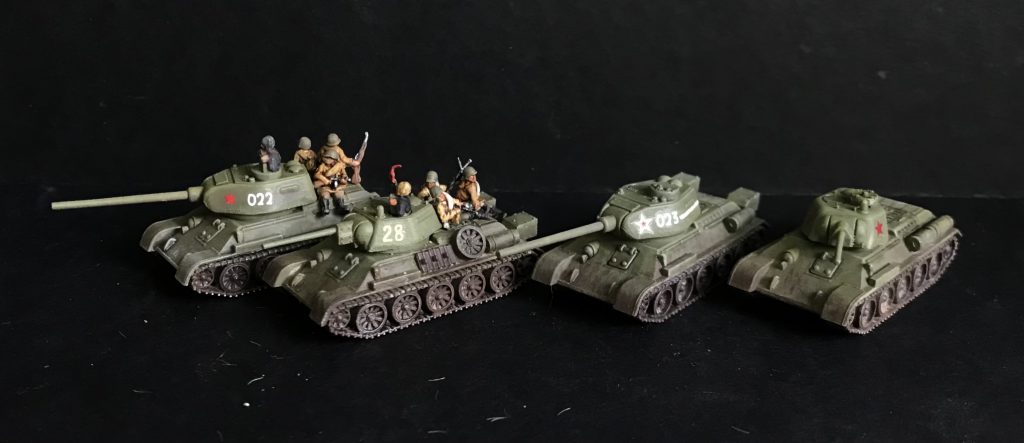 I can’t get enough of these little buggers. They’re not only perfect models, with exceptional detail for the scale, ease of build and general fantastic look, but they come with a load of tank riders too, making it a real two for one purchase – fantastic (mounted) infantry, fantastic tanks. I’ll use them – eventually – for Flames of War and Chain of Command, though in the latter case it’ll be one, rather than the fleet I’ve already made.
I can’t get enough of these little buggers. They’re not only perfect models, with exceptional detail for the scale, ease of build and general fantastic look, but they come with a load of tank riders too, making it a real two for one purchase – fantastic (mounted) infantry, fantastic tanks. I’ll use them – eventually – for Flames of War and Chain of Command, though in the latter case it’ll be one, rather than the fleet I’ve already made.

As to the real life tank itself, it’s a bloody T34 isn’t it? Does it need much introduction? The tank so ubiquitous it’s used as a shorthand when you’re arguing with an internet Stalinist. I think I put it pretty well just the other month when reviewing this kit:
There’s a lot of discussion about what the greatest tank of the Second World War was, to the extent that if you’re reading this you definitely have an opinion. Whenever this discussion comes up, the T34 must as well. By the end of the war neither the best armoured or the best gunned, but reliable, ubiquitous, manufactured in numbers that baffle the mind and, when it was introduced, a terrifying combat opponent. Upgunned to the T34-85 in 1944, it fought (nearly) everywhere the Red Army did during WW2, faced everything the Nazis could throw at it, and, through armour, doctrine and gun, mostly came out on top.
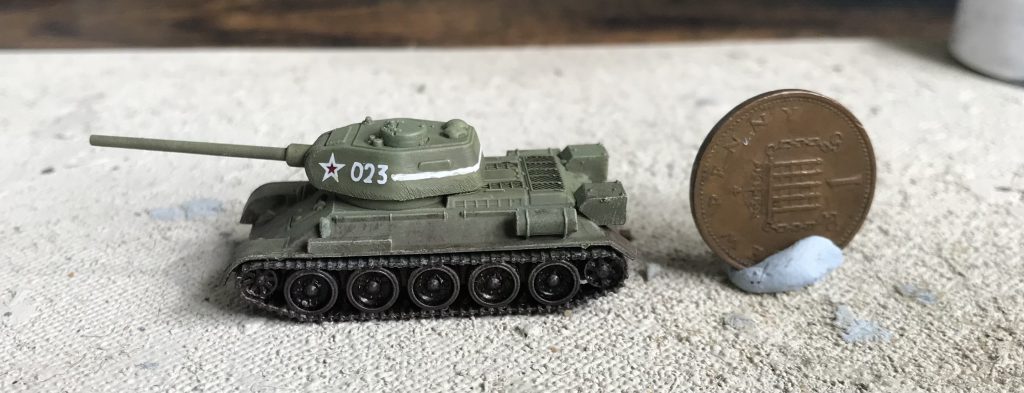
Enough said, really.
Lupe – M4 Sherman
Country of use: United States, United Kingdom, USSR… almost all the allies to be honest, and then all kinds of people later on. From 1930 through to the 1980s. Yes, you read that right. Israel was still using these glorious beasts when Madonna was topping the charts.
I’ve had Shermans from all kinds of places, but my favourites right now are the ones from Victrix. They’re just absolutely bloody adorable.

The thing is about the Sherman is that they were everywhere. Were they the toughest tank? No. The heaviest armed? No, not really. The fastest? Nope. But my god did they make a lot of them and they just wouldn’t die. They were repaired endlessly, people didn’t actually hate being in them (a huge problem with a lot of tanks), and they could keep going almost indefinitely. They’ve acquired a reputation for being light or shoddy in recent years and I think that’s an unfair portrayal of this little workhorse. I love this tank so bloody much that years and years ago I wrote an RPG that’s just about playing the crew of a Sherman tank.
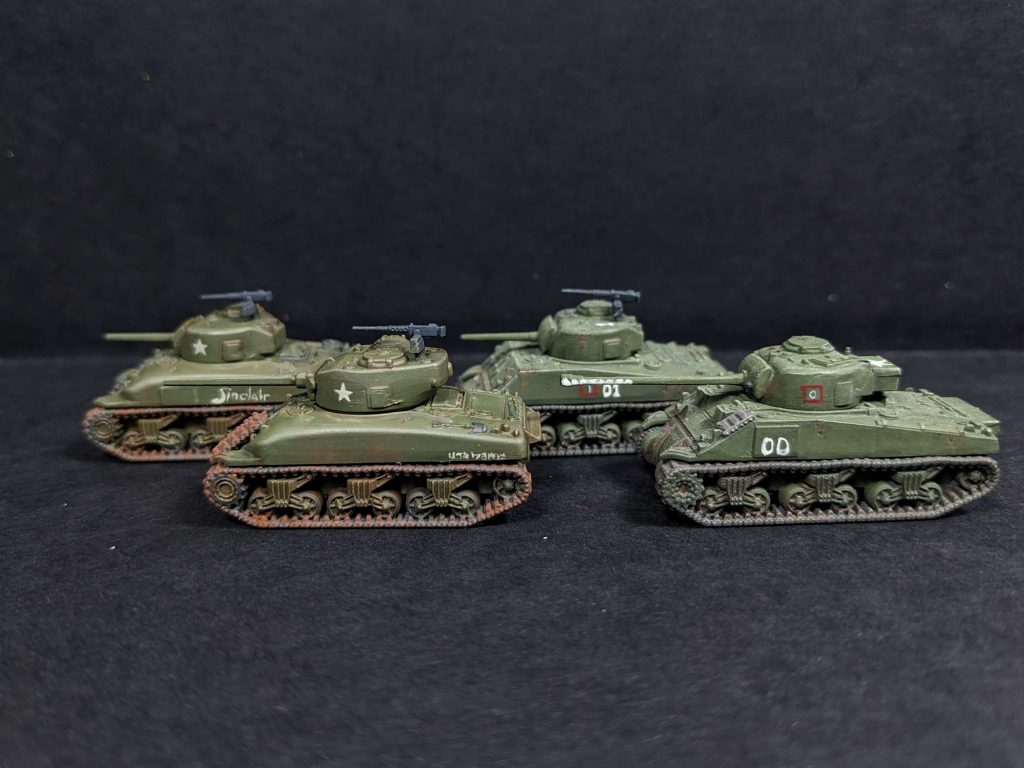
How can you be angry at this tank? It’s joyful, it’s scrappy, it’s the underdog. It’s a wonderful little machine.
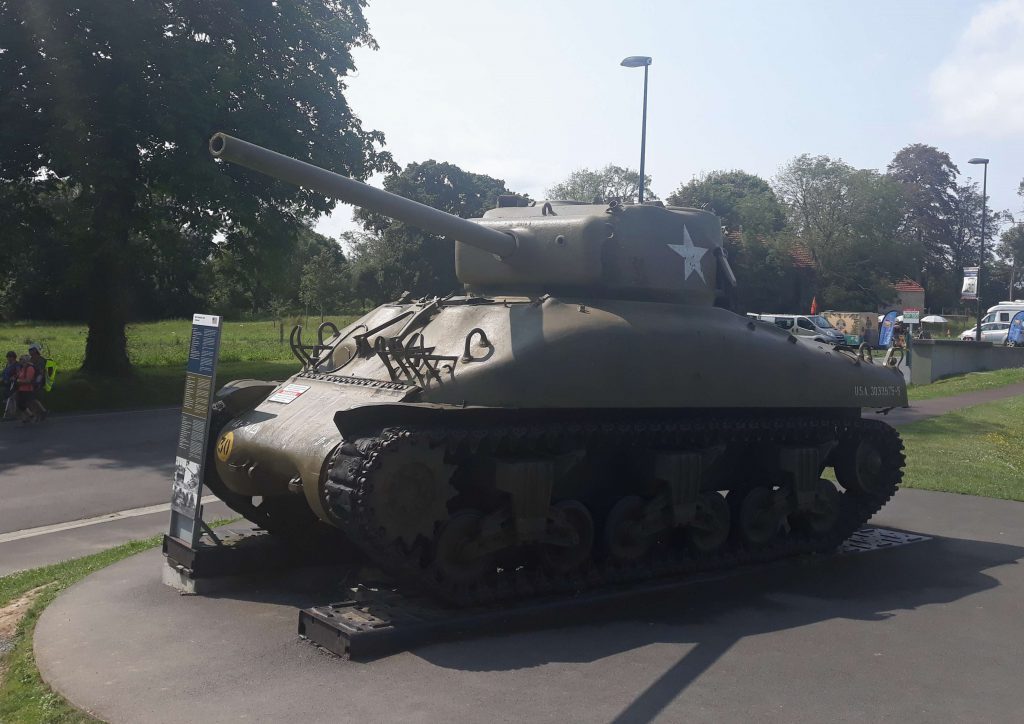

Magos Sockbert – M3A2 Bradley Fighting Vehicle
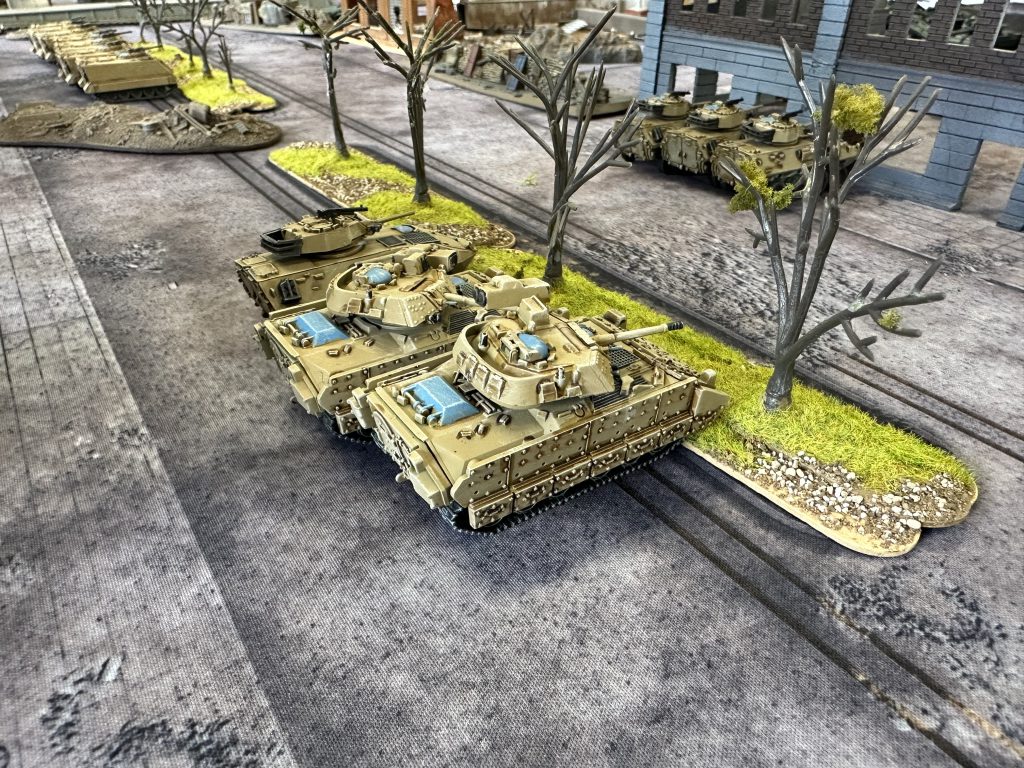
Country of use: America, Saudi Arabia, Lebanon, Ukraine
Dates of use: The Bradley infantry fighting vehicle has been used in various forms since 1981, with M3 armoured reconnaissance variant entering service in 1983. Developed to counter the Soviet BMP series, the Bradley had a, shall we say, controversial early history, leading to a moderately amusing but highly inaccurate HBO comedy movie being produced about its development called The Pentagon Wars.
Model manufacturer: This is Bradley Troop by Battlefront Miniatures for Team Yankee. The kit is simple and easy to assemble, and M2 and M3 variants (which are identical) and the M2A2 and M3A2 variants (which are identical).
A Team Yankee model, the Bradley can be used as a heavily gunned transport mounting a 25mm Bushmaster, a 7.62 machine gun, and a freaking TOW missile, and you’re absolutely paying for all that firepower. You can take M2 Bradleys as a full Mech Combat Team formation but I’ve found far more success using Bradleys as M3 scouts in various formations, including the M113 Mech Combat Team I recently took to the Oceanic Championships, alongside M1 and M1A1 Abrams the Bradleys were designed to keep pace with. In Team Yankee, models with the Scout rule allow you to move immediately after they’ve been deployed and expand your deployment zone around them, allowing you to control the battlefield before the game even begins. Once that’s done, they’re wonderful to hide in cover and pump out very annoying TOW missile shots, too annoying to leave alone but not worth the effort of killing.
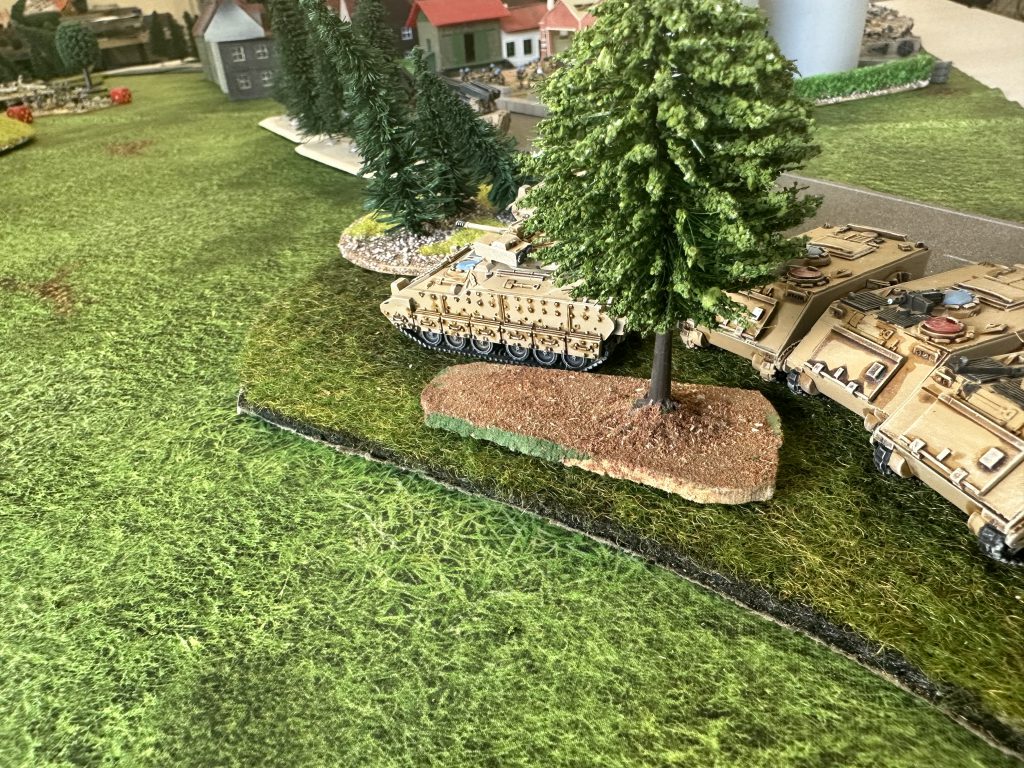
Whether it’s a tank or not is, if I’m honest, kinda a solved question, but I’m putting it here on the basis that it’s heavier than a T34, has hunted tanks on an equal footing in Iraq and Ukraine, and primarily, it just looks cute!
Ilor – Panzer III
Country of use: Germany, 1939-1943
Model by Warlord/Italeri

While distributed by Warlord Games and intended for use in Bolt Action, the beauty of historical games is that there are no copyrights on model designs. So pretty much any WW2 game from early to mid war is likely to see one of these on the table. So whether you’re playing Bolt Action, Chain of Command, or What a Tanker, you can easily slap a Pz III down and commence to blasting.
One of the things I like about this particular kit is that it supports several different variants of the Pz III, and because the Germans never saw a vehicle they didn’t want to make endless modifications on, the kit has loads of bits and bobs you can throw on there if you want to accurately model something from a particular era. I am first and foremost a gamer rather than a modeler (so I am less concerned with which muffler is accurate to the Ausf G/H versus M/N, or whether there are tiny firing ports in the sides of the turret), but having multiple main weapon and armor options in the kit is really nice from a WYSIWYG perspective. A little judicious magnetizing (easy with this kit) and you can freely swap between several different models with ease.
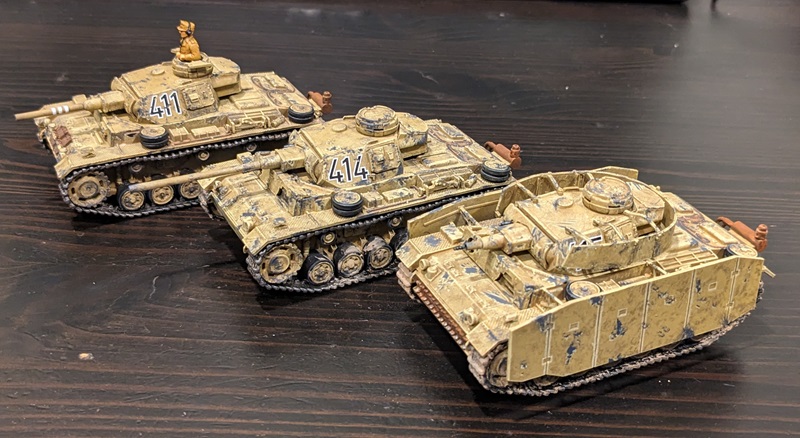
As for the tank itself, one of the reasons it had so many variants is that the basic chassis was pretty well designed. It had a number of what we would now call “ergonomic” features that made it more comfortable and user-friendly for it crew (with the exception of the loader, who pretty much always gets screwed in any tank design). As armor developed and main guns increased in size, the Pz III was modified accordingly, progressively fitting larger and longer main armament and beefing up the armor. Even once technology eventually outpaced the Pz III and rendered it largely obsolete, the chassis itself saw continued life in the ubiquitous StuG III assault guns, produced right up until the end of the war.
Jackie Daytona: Sturmgeschütz III
That’s a rather seamless transition. This staple German WW2 assault gun is indeed not the typical parade horse like the Tiger or Panther, but it was successful and had an operational history well into 1973 in the Middle-East! It’s a bit like the Sherman in that regard, my other favorite tank (shamelessly sniped by Lupe). It can’t be underestimated how much ease of maintenance can impact the operational role of a tank. It might not be the latest in tech or ingenuity, but it didn’t blow it’s transmission after 100 kms either. Coupled with the low profile and unique look, nobody can hate on a Stug. Besides, you can use them in any theater, as they were used on practically all fronts. As the moniker “assault gun” would have you guess, they were used as close infantry support although the fact it did not have a turret hampered it somewhat.

The models you see here are some of the first I ever painted after a long hiatus in wargaming (they’re from the previous edition of Battlefront’s Hit the Beach starter). I’ve improved techniques since then, but I’m still satisfied with how they look and they were easy enough to assemble and get into hobbying again. They see the most use in Battlegroup, still my favorite WW2 ruleset.
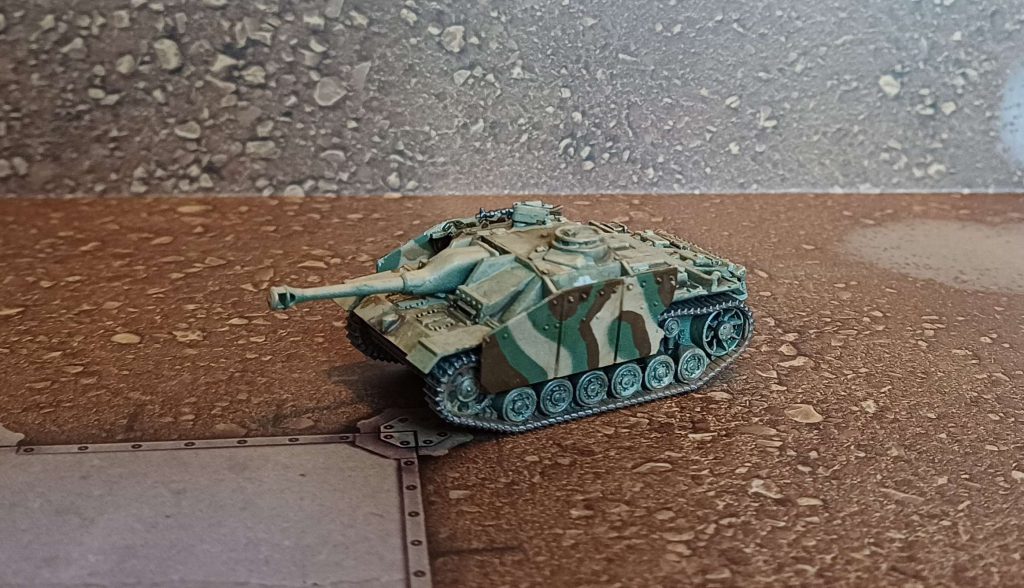
Alex Smith – Panzer 38(t)
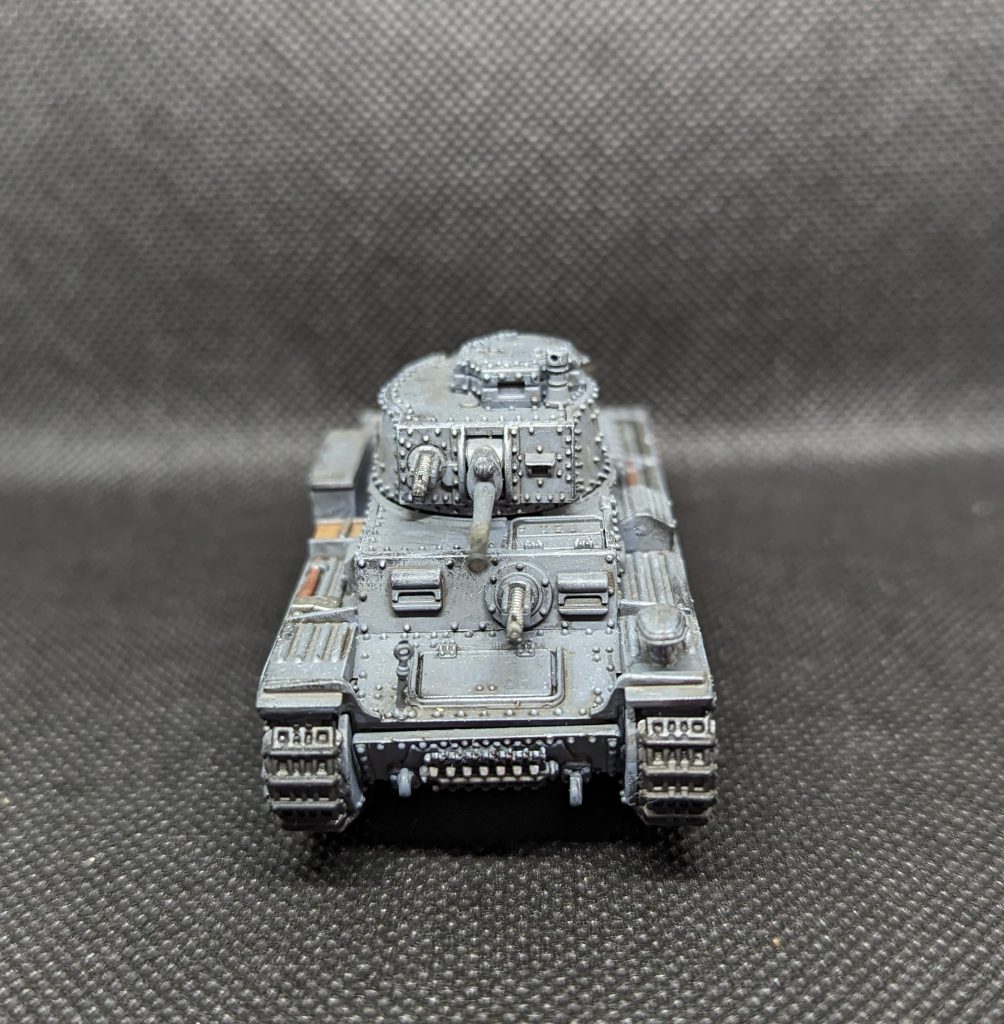
Country of use: Czechoslovakia, Germany, Hungary, Romania, Slovakia
Dates of use: 1939-1945
While other interwar tank designers were experimenting with making tiny little baby tanks, hulking monstrosities with four turrets, or other nutso ideas, the Czechoslovakian army was just focusing on making a solid, functional tank. Known by a variety of names (depending on its user), this dependable armored fighting vehicle is perhaps best known by the German designation – Panzer 38(t).
For an interwar tank, this thing kicked ass. It was reliable, fairly zippy, and had decent armor and weaponry. By mid-war, they were, of course, showing their age – especially against medium tanks like the T-34. Nevertheless, when crewed by aggressive and well-trained crews, the Panzer 38(t) could still be dangerous!
Most importantly, it’s a cool looking tank. Covered in rivets, this sexy armored fighting vehicle is ribbed for your pleasure. Painting them is also fun, with the riveted plates giving places for washes to pool around and a little raised spot for highlights. Plus, all you need is one and you can field it in a variety of Axis armies! My Pz. 38(t) has Hungarian decals on it, but I will admit surreptitiously sneaking this tank into my German, and Romanian lists as well.
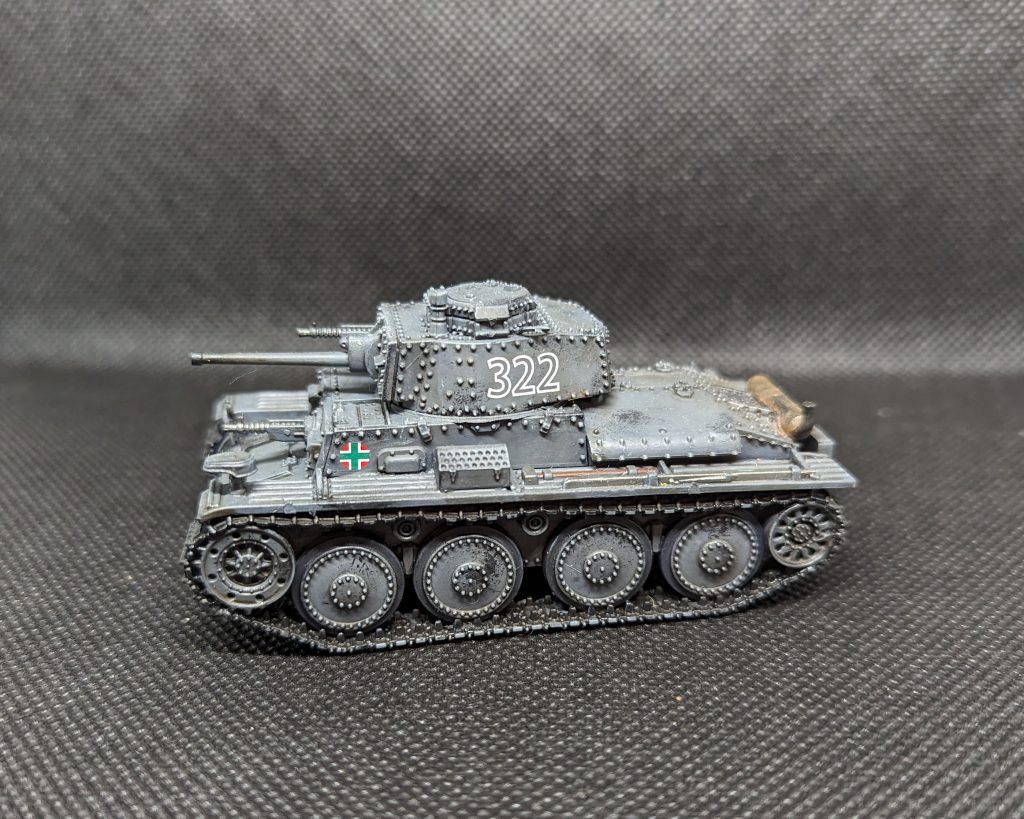
In Bolt Action, where heavy tanks are generally overpriced, a light tank like the Pz. 38(t) will serve you well. Coming equipped with a light AT gun, a coaxial MMG, and a hull-mounted MMG for only 135 points.
chimp – IS-2 model 1944
Country of use: USSR from 1944 until 1945 and then variously modernised/put into storage until being totally decommissioned in 1995.
Models by Battlefront
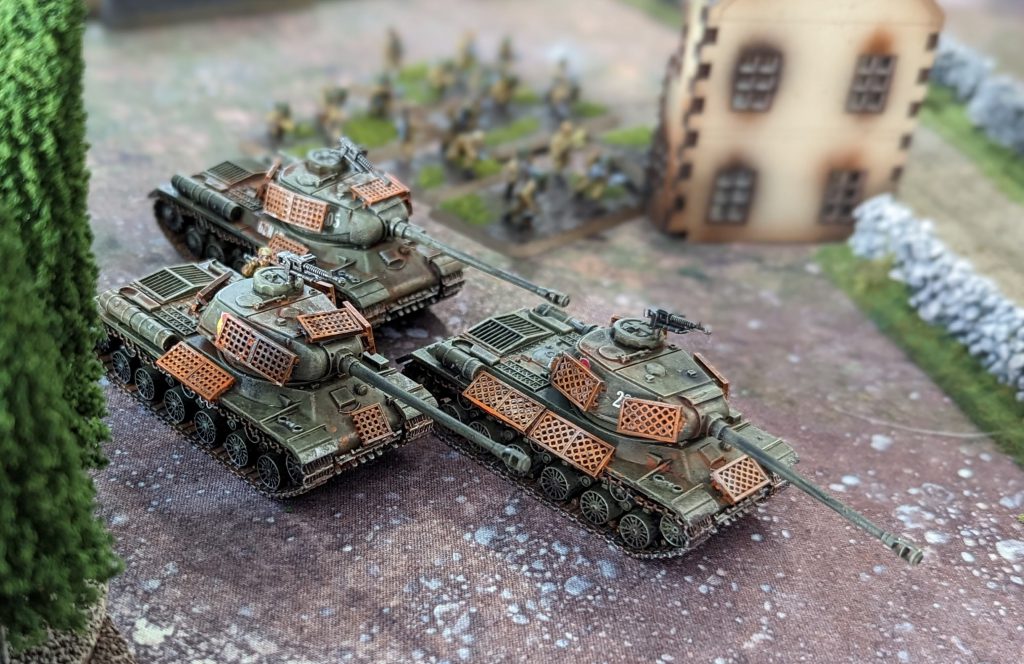
The IS-2 is a bit of a forgotten beast for a WW2 heavy tank that was as mass produced as it was – with more being cranked out in the last couple of years of the war than the Tigers which get all the attention. In many ways it was the end of an era, whilst the early Cold War featured heavy tanks on both sides it was pretty quickly realised that these designs were obsolete on a battlefield dominated by the MBT.
I use these in Flames of War, where I like to cackle and drive them full speed towards the enemy whilst anti-tank shells bounce off in every direction. OK, so the main gun has a terrible rate of fire, but what if the tank just assaults you instead?

It helps that the IS-2 is lovely looking machine, particularly the 1944 model’s more sloped glacis, and you can go wild grubbying the models up to look appropriately well worn. Battlefront are also happy to sell upgrade packs to represent bedspring armour, which is perhaps of dubious practical use in the real world, but really sells that end of the war street-to-street fighting look.
Questions, comments, suggestions? Contact@goonhammer.com or leave a comment below.



You must be logged in to post a comment.